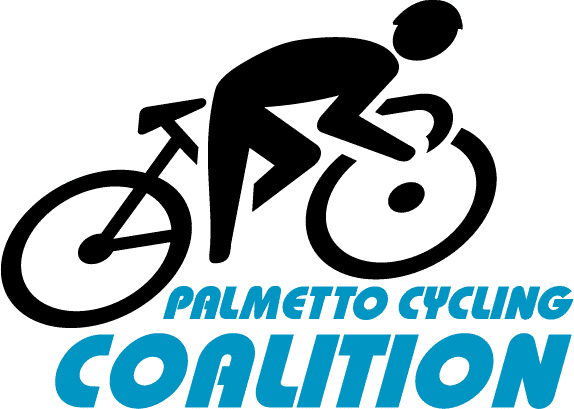A South Carolina Complete Streets policy
In 2003, the SC Department of Transportation (SCDOT) Commission passed a Complete Streets Resolution. This resolution stated the following:
- Bike/Ped projects are eligible for funding from almost all of the major Federal aid funding programs
- SCDOT is strongly committed to improving conditions for walking and bicycling
- Bike/Ped planning should be a routine part of the department’s planning, design, construction and operating activities
- SC municipalities and counties are required to make bike/ped improvement an integral part of their program where state and federal funding is utilized
These are great statements and illustrate a major improvement from before 2003. However, 10 years later we see little implementation. Transportation Enhancements money was cut in half. The Governor’s recent retention of SC trail funding led to a negative Commission response. And SCDOT staff routinely say bicycle and pedestrian accommodations are too costly for their projects, while retrofit options with no extra cost are routinely sidestepped. SCDOT has qualified staff, and we know they can shift course.
The Georgia Department of Transportation (GDOT) recently passed their own Complete Streets policy internally. This is a quality document. Beyond simply stating intentions, it takes the huge additional step of stating the action plan. It is a real policy and one worthy of emulation by South Carolina.
As a stakeholder in the SCDOT Multi Modal Transportation Plan, the PCC just recommended South Carolina adopt this same policy. See below for the essential elements:
Complete Streets policy recommendation
Bicycle Warrants
Standards – Bicycle accommodations shall be considered in all planning studies and included in all reconstruction, new construction, capacity-adding, and resurfacing/maintenance projects that are located in areas with any of the following conditions:
- if the project is on a designated (i.e, adopted) US, State, regional, or local bicycle route;
- where there is an existing bikeway along or linking to the end of the project corridor (e.g., shared lane, paved shoulder, bike lane, bike boulevard, or shared-use path);
- along corridors with bicycle travel generators and destinations (i.e. residential neighborhoods, commercial centers, schools, colleges, scenic byways, public parks, transit stops/stations, etc.);
- on projects where a bridge deck is being replaced or rehabilitated and the existing bridge width allows for the addition of a bikeway without eliminating (or precluding) needed pedestrian accommodations; and
- where there is an occurrence of reported bicycle crashes which equals or exceeds five for a 1-mile segment of roadway, over the most recently three years for which crash data is available.
Guidelines – Bicycle accommodations should be should be considered on projects that are located in areas with any of the following conditions:
- within close proximity (i.e., 3 miles) of a school, college, university, or major public institution (e.g., hospital, major park, etc.,..);
- where a project will provide connectivity between two of more existing bikeways or connects to an existing bikeway;
- where there is an occurrence of bicycle crashes;
- along a corridor where bicycle travel generators and destinations can be expected prior to the design year of the project;
- any location where engineering judgment, planning analysis, or the public involvement process indicates a need.
On resurfacing projects in urban areas, SCDOT will consider requests from local governments to restripe the roadway and narrow travel lanes, to add bicycle lanes. A shared lane may be considered if sufficient width is not available for a bicycle lane. Restriping that includes narrowing of the travel lanes will be considered where space is available and where the motor vehicle crash rate for sideswipe crashes (for the most recent three years for which data is available) does not exceed the statewide average for the same functional classification.
Exclusions – The consideration of bicycle warrants may be excluded from roadways with any of the following conditions:
- for very low speed (i.e., <35mph) residential roadways where bicyclists can safely share the roadway with motor vehicles;
- on side road tie-ins where there is no existing sidewalk or bicycle accommodation and widening of construction limits for sidewalk or bicycle accommodation would result in disproportionate impacts to adjacent property (as decided by the project development team on a case-by-case basis)
Pedestrian Warrants
Standards – Pedestrian accommodations shall be considered in all planning studies, and included in all reconstruction, new construction, and capacity-adding projects which include curb and gutter as part of an urban border area or are located in areas with any of the following conditions:
- Along corridors with pedestrian travel generators and destinations (i.e. residential neighborhoods, commercial areas, schools, public parks, transit stops and stations, etc.), or areas where such generators and destinations can be expected prior to the design year of the project;
- Where there is evidence of pedestrian traffic (e.g., a worn path along roadside);
- Where pedestrian crashes equal or exceed ten for a ½-mile segment of roadway, over the most recent three years for which crash data is available; and
- Where a need is identified by a local government, MPO or Council of Government through an adopted planning study.
Guidelines– Pedestrian accommodations should be considered on projects that are located in areas with any of the following conditions:
- Within close proximity (i.e., 1 mile) of a school, college, university, or major public institution (e.g., hospital, major park, etc.,….);
- Within an urbanized area; or area projected to be urbanized by an MPO, Council of Government, or local government prior to the design year of the project;
- Where there is an occurrence of pedestrian crashes; and
- Any location where engineering judgement, planning analysis, or the public involvement process indicates a need.
Posted in Advocacy

Public transit should at least be mentioned here. Transit only works if Pedestrians and cyclists can safely reach stops where it is safe and comfortable to wait for a bus. Good locations at which to lock up bikes need to be nearby.